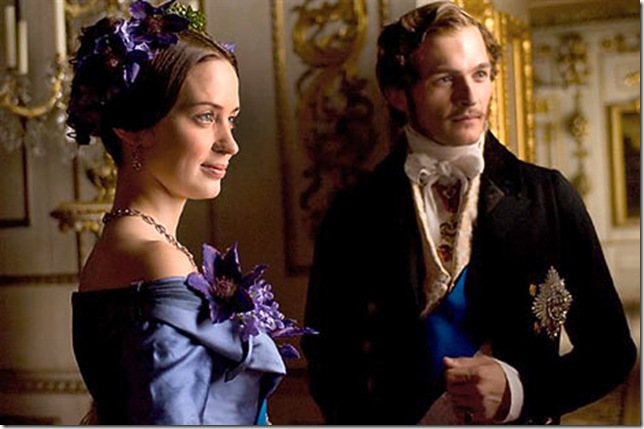Martin Scorsese clearly has enough of a soft spot for arch period pieces that he offered to gamely produce Jean-Marc Valee’s The Young Victoria. But his masterful guidance is generally absent from this inert account of the years surrounding Queen Victoria’s coronation.
Before going further, I have to admit a bias here: I view Victorian costume dramas the way a sugar-addicted 8-year-old views cold vegetables. Most of them go down as just as painfully, and the fact that they’re “good for you” is of little consolation. And it doesn’t get more Victorian than this film, which has the word “Victoria” in the title.
The Young Victoria confirms every negative conception I have toward these movies: Like many of the story’s denizens, it’s static, pale, bloodless and artificially genteel. Valee tries his darnedest to make this wax-museum tableau move – with a jump cut here and a flashy cinematographic flourish there – but this is a story that doggedly refuses to engage the viewer beyond a few scant factual revelations better rendered by a textbook. I wouldn’t advise viewing the trailer, because it spoils the only two moments of action in the film – one of which was fabricated by screenwriter Julian Fellowes to provide an ersatz climax to this non-drama.
Compare this staid and stagebound work to another recent biopic of a budding monarch, Sofia Coppola’s postmodern classic Marie Antoinette, to see how far gone it is from its own potential. Marie Antoinette reinvented the costume drama as a post-punk opera of decadence, its anachronistic soundtrack and shockingly unique casting contributing to its director’s powerful feminist manifesto.
Having seen hundreds of films since viewing Marie Antoinette nearly four years ago, there are images from Coppola’s film that have a permanent residency in my brain. A week after looking at Valee’s Victoria, it’s hard to recall more than two or three memorable snapshots.
Emily Blunt, who received a Golden Globe nomination for her role, plays the 17-year-old Victoria as an ambitious teenager shackled by her privilege: She’s so important that a guardian is still required to hold her hand up and down every palace staircase, and despite her royal pedigree, she’s lorded over by her mother, the Duchess of Kent (Miranda Richardson) and mom’s controlling companion, Conroy (Mark Strong). When King William IV (Jim Broadbent) dies, Victoria inherits the throne and soon becomes ensnared in criticism for her supposed inability to govern.
That is, we’re told numerous times that she’s run the crown into the ground, but we’re shown little evidence of it. Fellowes’ script breaks a cardinal rule of screenwriting: It tells rather than shows. Even in conveying the queen’s dedication to the United Kingdom’s poor and underprivileged, which posits her as a progressive figure in a conservative monarchy, Fellowes fails to adequately follow up on her achievements (or non-achievements, as it may have been). This is partly due to the film’s need to fill its quota as teenage-girl swoon-worthy romance, focusing most of its inspiration on the garden-variety quill-and-paper romance between Victoria and Prince Albert (Rupert Friend).
Perhaps The Young Victoria is proof that not every significant historical figure has a story worth telling. When Victoria and Albert engage in a bit of self-consciously clever, metaphor-driven logorrhea over a game of chess (“Do you ever feel like a chess piece yourself? In a game being played against your will?” she asks), the scene serves as an apt metaphor for the film itself: Its characters are lifeless chess pieces, moving along the same predestined paths.
If only the film granted us the dramatic potency of a checkmate.
John Thomason is a freelance writer based in South Florida.
THE YOUNG VICTORIA. Distributor: Apparition Films; Director: Jean-Marc Valee; Starring: Emily Blunt, Rupert Friend, Paul Bettany, Miranda Richardson, Jim Broadbent, Thomas Kretschmann; Rating: PG-13; Opens: Friday; Venue: Regal Delray Beach 18
